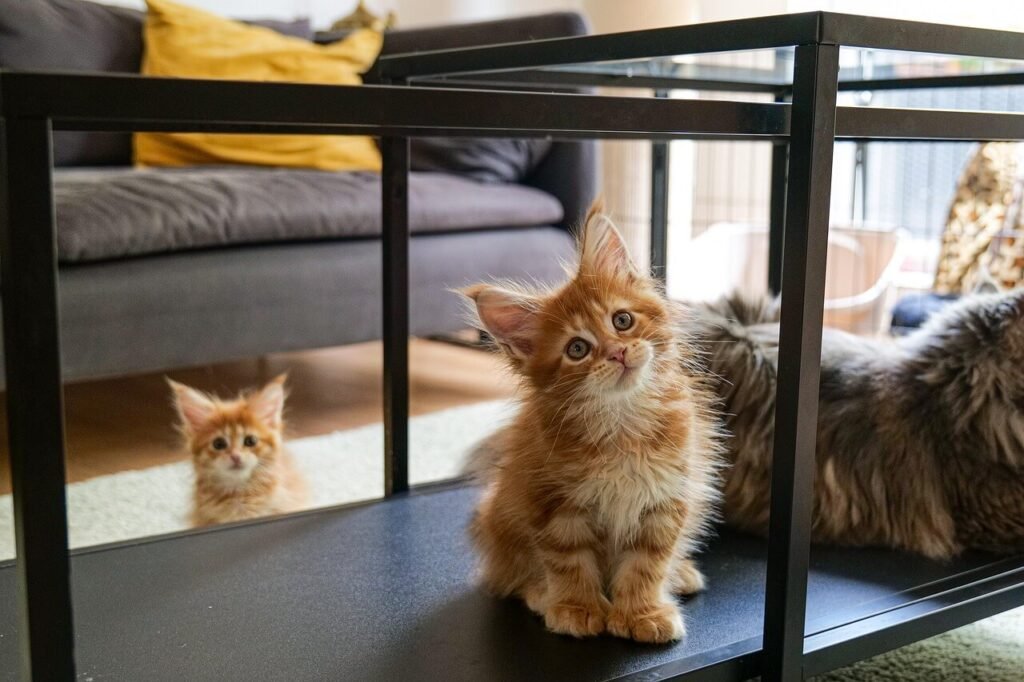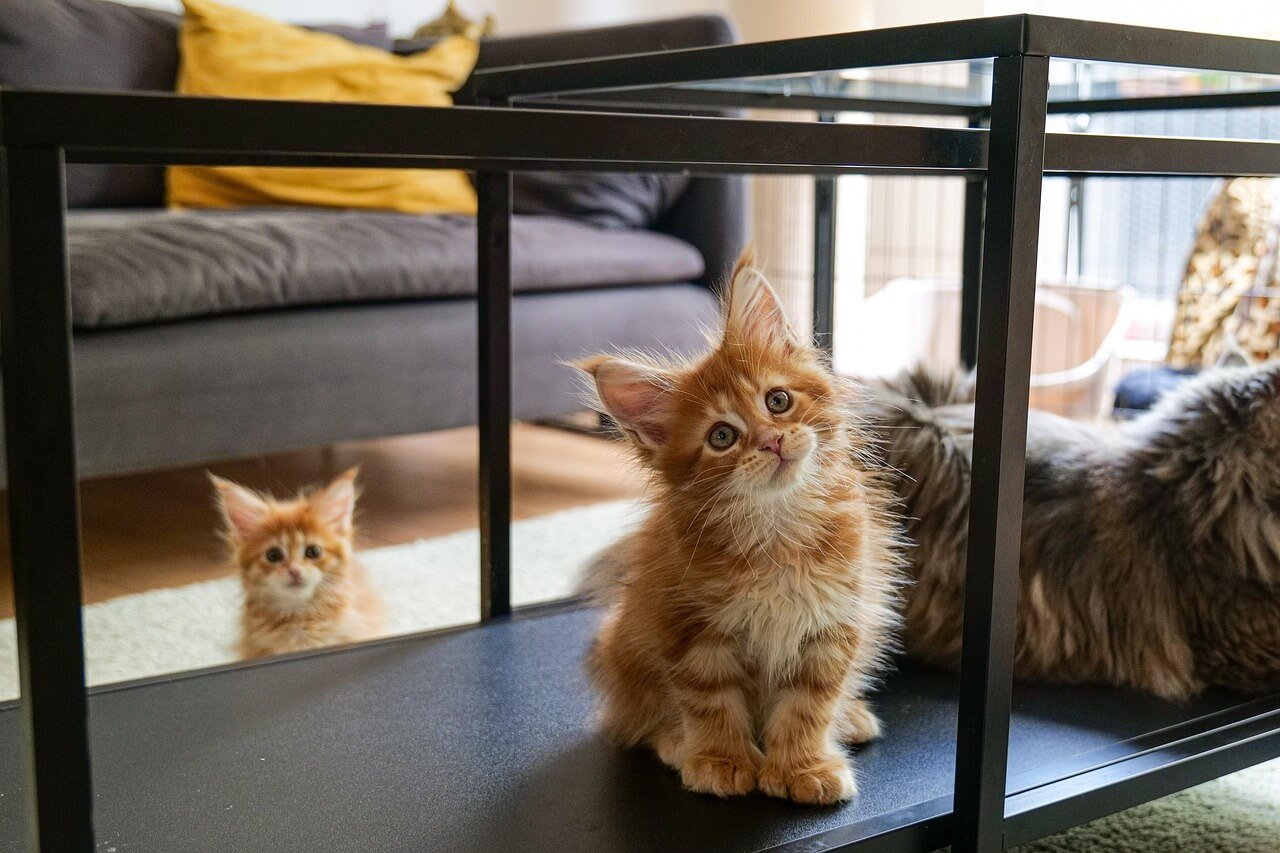Why Do Cats Eat Plants? Decoding This Curious Behavior
Cats are obligate carnivores, meaning their diet is primarily meat-based. Yet, many cat owners have observed their feline friends nibbling on grass, houseplants, or even catnip. Why do cats eat plants when they don’t need them for nutrition? Is this behavior normal, or should it raise concern? The truth is, plant-eating is a common and often harmless habit among cats, driven by instinct, health needs, and curiosity. In this article, we’ll explore the reasons behind this behavior, how to ensure your cat’s safety around plants, and what you can do to support their well-being.
Understanding the Motivation: Why Cats Turn to Plants
While cats don’t require plants for survival, there are several reasons why they might indulge in this behavior. From natural instincts to addressing physical discomfort, here are some of the most common explanations:
Digestive Aid :
Eating grass can help cats regurgitate hairballs or indigestible materials, providing relief from stomach discomfort.Nutritional Deficiency :
Some cats may crave certain nutrients found in plants, such as fiber, if their diet is lacking.Curiosity and Exploration :
Cats are naturally curious creatures, and tasting plants is part of their sensory exploration.Stress Relief :
Chewing on plants can serve as a self-soothing mechanism during times of anxiety or boredom.Instinctual Behavior :
Wild ancestors of domestic cats likely consumed plants as part of their natural foraging habits.
Understanding these motivations can help you determine whether your cat’s plant-eating is normal or if it signals an underlying issue. Observing their overall health and behavior is key.
Knowing What’s Safe: A Guide to Cat-Friendly Plants
Not all plants are safe for cats to nibble on, and some can be highly toxic. As a responsible pet owner, it’s essential to distinguish between safe and harmful plants to keep your feline friend healthy. Here’s a breakdown of what to look out for:
Safe Plants :
Spider plants, Boston ferns, and catnip are non-toxic and commonly enjoyed by cats.Toxic Plants :
Lilies, philodendrons, and pothos can cause severe reactions, including vomiting, kidney failure, or difficulty breathing.Signs of Poisoning :
Symptoms like drooling, lethargy, or vomiting may indicate your cat has ingested something toxic.Cat Grass Kits :
Growing cat-safe grass indoors provides a controlled and safe option for plant-eating cats.How to Cat-Proof Your Home :
Remove toxic plants, use deterrent sprays, or place plants out of reach to prevent accidental ingestion.
By creating a cat-friendly environment, you can ensure your furry companion stays safe while indulging their curiosity.
Check this guide 👉Are Tulips Cat Safe? Best 7 Expert Tips!
Check this guide 👉Are Carnations Cat Safe? Best 7 Expert Tips!
Check this guide 👉Is Ranunculus Cat Safe? Best 7 Expert Tips!

Safe Plants for Cats | Toxic Plants for Cats |
|---|---|
Spider Plant | Lily |
Boston Fern | Philodendron |
Catnip | Pothos |
African Violet | Aloe Vera |
Bamboo Palm | Daffodil |
The Upside: How Plant-Eating Can Benefit Your Cat
While plant-eating might seem unusual, it can actually offer some benefits for your cat’s health and well-being. Understanding these advantages can help you appreciate this quirky behavior and provide appropriate outlets for it.
Hairball Management :
Grass helps cats expel hairballs more easily, reducing digestive discomfort.Dietary Fiber Boost :
Plants can supplement a cat’s diet with additional fiber, supporting gut health.Mental Stimulation :
Chewing on plants keeps cats entertained and engaged, especially indoors.Natural Instinct Fulfillment :
Allowing cats to eat safe plants satisfies their innate foraging behaviors.Emotional Comfort :
Plant-eating can serve as a calming activity during stressful situations.
When done safely, plant-eating can be a positive addition to your cat’s routine. Just ensure they’re accessing non-toxic options.
When to Worry: Red Flags to Watch For
While occasional plant-eating is typically harmless, certain behaviors or symptoms may indicate that your cat is consuming plants excessively or due to an underlying issue. Here’s what to look out for:
Frequent Vomiting :
If your cat vomits regularly after eating plants, it could signal gastrointestinal distress.Excessive Chewing :
Constantly chewing on plants might indicate stress, boredom, or a dietary deficiency.Weight Loss or Appetite Changes :
A sudden change in eating habits could point to a medical condition requiring veterinary attention.Ingestion of Toxic Plants :
Immediate action is needed if your cat consumes a known toxic plant.Behavioral Changes :
Lethargy, aggression, or withdrawal may accompany problematic plant-eating habits.
If any of these signs occur, consult your veterinarian promptly to rule out serious health concerns.
Creating a Cat-Friendly Environment: Supporting Healthy Plant Consumption
If your cat enjoys eating plants, it’s important to guide this behavior in a way that keeps them safe and satisfied. By providing appropriate alternatives and discouraging access to harmful plants, you can ensure their plant-eating remains a positive experience. Here are some practical tips to encourage safe habits:
Grow Cat Grass Indoors :
Cat grass (wheatgrass, oatgrass, or barley) is a safe and nutritious option for cats who crave greens.Use Deterrents for Toxic Plants :
Apply pet-safe deterrent sprays to discourage chewing on dangerous houseplants.Redirect Their Attention :
Offer toys or interactive play sessions to distract them from nibbling on unsafe plants.Place Plants Out of Reach :
Hang toxic plants or place them on high shelves to prevent accidental ingestion.Introduce Catnip as an Alternative :
Catnip is a safe and enjoyable substitute that satisfies their craving for vegetation.
By taking these steps, you can create a safer and more enriching environment for your cat while accommodating their natural instincts.
When Plant-Eating Becomes a Coping Mechanism: What to Look For
Sometimes, cats turn to plants as a way to cope with stress or anxiety. This behavior can be a sign that they need additional emotional support or environmental enrichment. Here are some indicators that your cat might be using plants to self-soothe:
Increased Chewing During Changes :
Cats may chew plants more frequently during stressful events like moving or introducing new pets.Frequent Visits to the Same Plant :
Repeatedly returning to one plant could indicate it provides comfort or distraction.Accompanying Behavioral Changes :
Hiding, excessive grooming, or vocalizing may accompany stress-related plant-eating.Preference for Soft, Leafy Plants :
Cats often gravitate toward soft-textured plants when seeking comfort.Relaxation After Chewing :
If your cat appears calmer after nibbling, it may be using plants as a stress-relief tool.
If you notice these signs, consider addressing potential stressors in your cat’s environment and providing alternative forms of enrichment.
Setting Boundaries: How to Manage Excessive Plant Consumption
While occasional plant-eating is normal, excessive nibbling can lead to digestive upset or other issues. Managing this behavior ensures your cat stays healthy and avoids overindulgence. Here are some strategies to help regulate their plant consumption:
Limit Access to Plants :
Restrict access to areas where plants are kept to reduce temptation.Provide Fiber-Rich Food :
High-fiber cat food can satisfy their dietary needs and reduce cravings for plants.Monitor Frequency :
Keep track of how often your cat eats plants to identify patterns or excessive behavior.Offer Chew Toys :
Provide textured toys designed for gnawing to redirect their chewing urges.Consult Your Veterinarian :
If the behavior seems compulsive, seek professional advice to rule out underlying health concerns.
By setting boundaries and offering alternatives, you can help your cat maintain a balanced relationship with plants without compromising their well-being.
Frequently Asked Questions About Cats Eating Plants
Is it normal for my cat to eat grass?
Yes, many cats eat grass to aid digestion or alleviate boredom—it’s generally harmless.
Can eating plants harm my cat?
It depends on the plant; some are safe, while others are toxic and can cause illness.
Why does my cat chew on houseplants?
They may be exploring, seeking comfort, or trying to address a nutritional gap.
Should I stop my cat from eating plants altogether?
Not necessarily—just ensure they only access safe, non-toxic plants.
How can I discourage my cat from eating toxic plants?
Use deterrent sprays, relocate plants, or replace them with cat-safe alternatives.
Final Thoughts: Embracing Your Cat’s Natural Behaviors
Cats eating plants is a fascinating and often beneficial behavior rooted in their instincts and biology. While it’s generally harmless, ensuring your cat’s safety by providing access to non-toxic plants and monitoring their health is crucial. By understanding the reasons behind this habit and taking proactive steps, you can create a harmonious environment where your cat thrives. Remember, every cat is unique, and their quirks—like nibbling on grass—are just another reminder of their incredible adaptability and charm. So embrace their plant-loving ways, knowing you’ve got their best interests at heart!
Cat Fever Treatment: Best 7 Expert Tips! Discover expert advice on identifying, managing, and treating fever in cats to ensure their quick recovery and well-being.
Understanding Meloxicam for Cats: Best 7 Expert Tips! Learn how to safely administer meloxicam, manage side effects, and ensure your cat's comfort with expert advice on feline pain relief.
Amoxicillin for Cat UTI: Best 7 Expert Tips! Discover safe usage, dosage guidelines, and expert advice on treating feline urinary tract infections effectively with amoxicillin.
Understanding Cat Cancer Treatment: Best 7 Expert Tips! Discover expert advice on managing feline cancer, from early detection to treatment options, ensuring your cat’s health and comfort.





